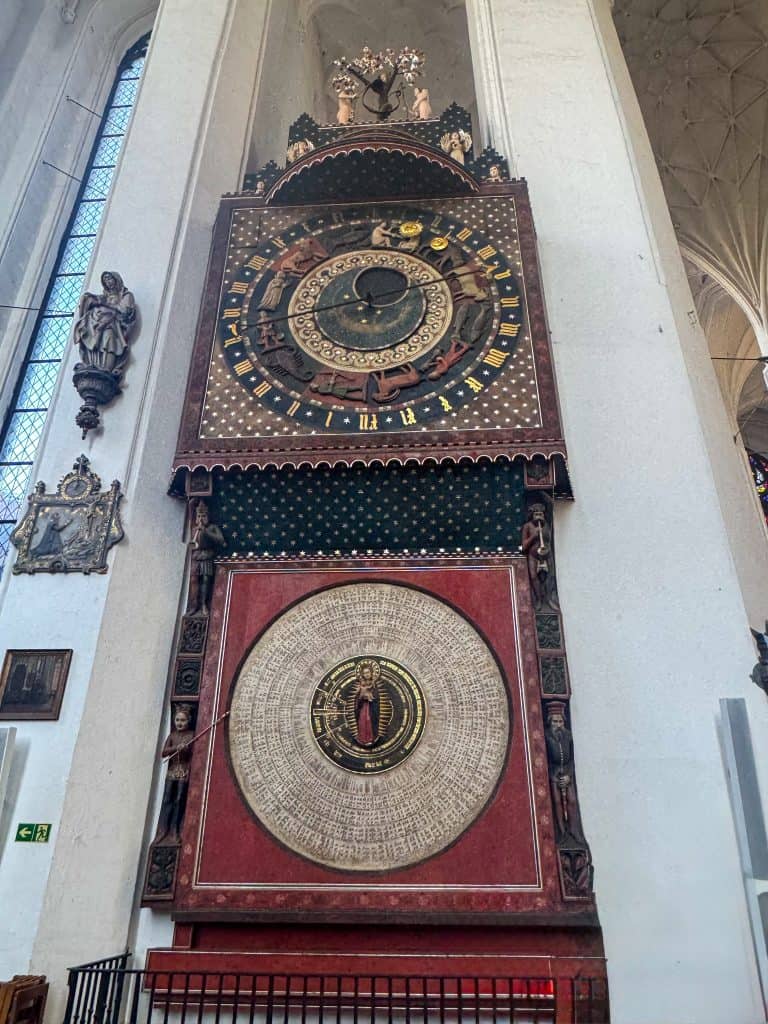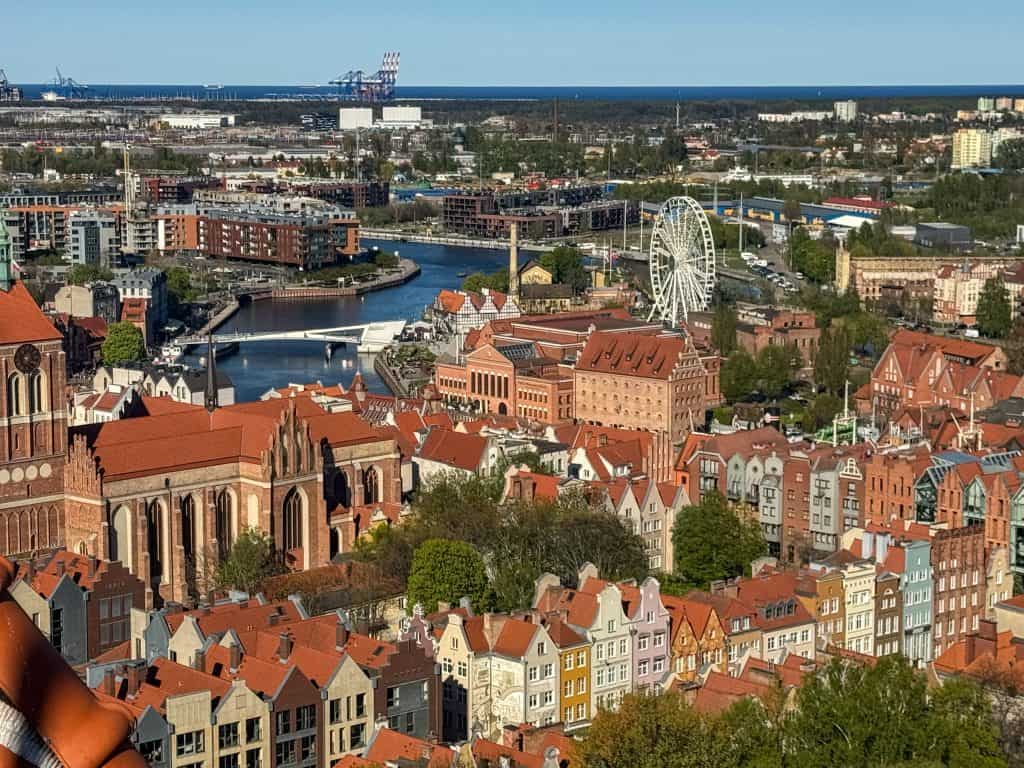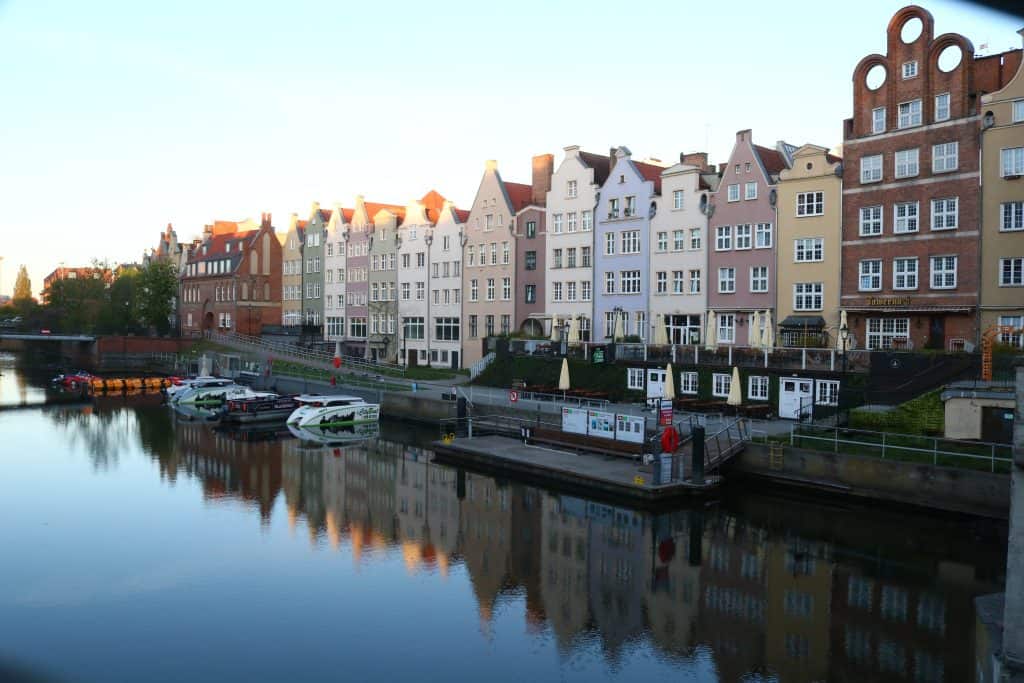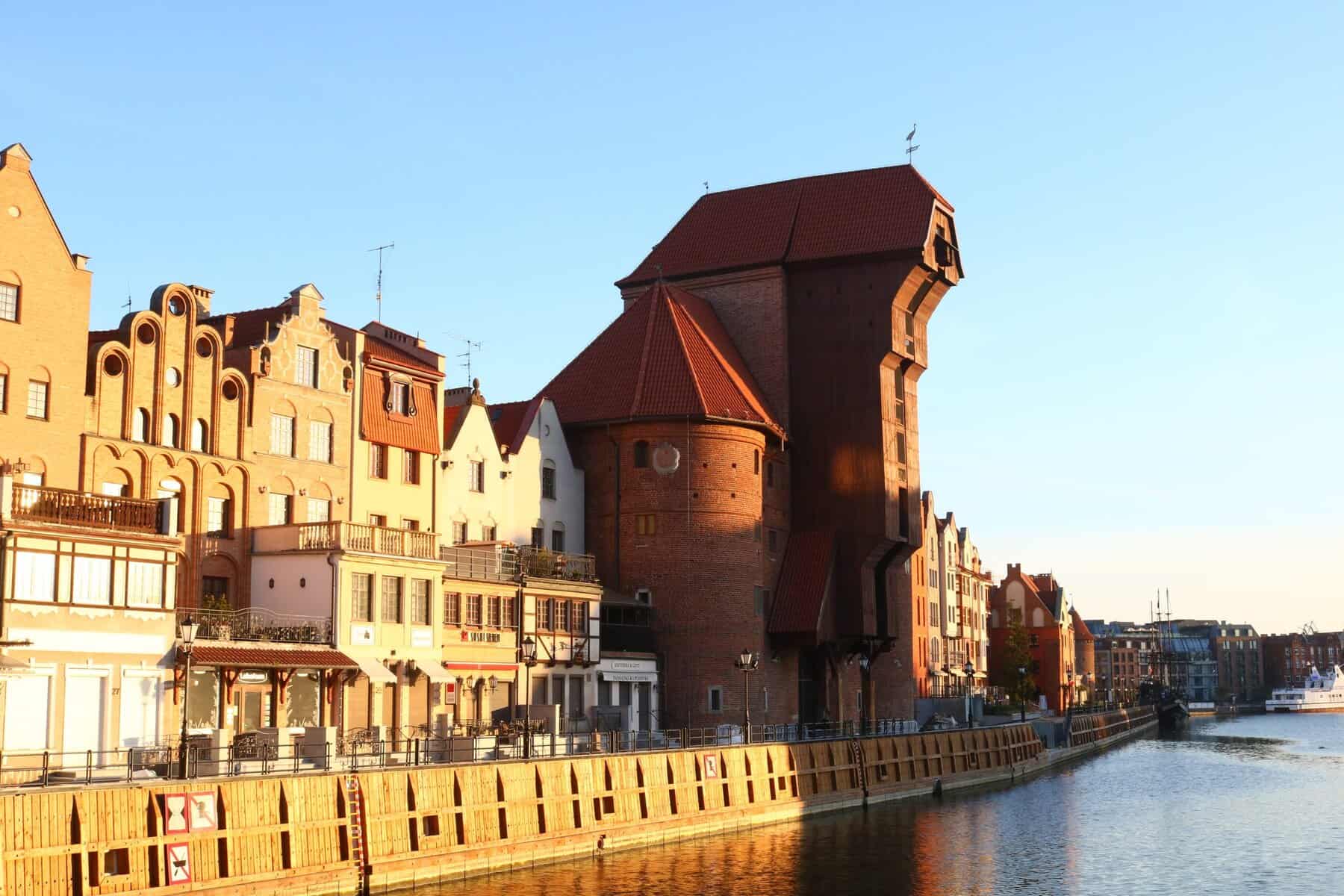Visiting Gdańsk, Poland: A relaxed 2-day Itinerary for First-Timers
Freedom Years Travel contains affiliate links. If you make a purchase using one of the links below, we may receive compensation at no extra cost to you. We only recommend products and services we use and trust. Read our disclaimer for more information.
Wondering what you can see and do in Gdańsk in just two days?
Many first-time visitors are drawn to this charming Polish city, curious about its blend of history, culture, and waterfront beauty. But if you’re like me, you may have many questions, such as: Is two days enough? Will it be easy to get around? And what about the language barrier?
Rest assured, Gdańsk is incredibly walkable, public transport is simple to navigate, and most people you’ll encounter speak excellent English—making it a dream for independent travelers.
I recently visited Gdańsk and was amazed by how much I could experience in just 48 hours. As someone who loves to explore new places at my own pace, I appreciated how easy it was to dive into the city’s history, sample local cuisine, and still find time to relax. Clearly, the city made an impression—I found myself back there again within 12 months.
If you’re an independent traveler looking for some practical tips, this two-day itinerary will take the guesswork out of your planning. It will guide you through a balanced, no-rush exploration of Gdańsk that’s perfect for first-time visitors. So, let’s get started!
Day One – Exploring Gdańsk Old Town, Museum of World War 2 & Food Tour

Exploring the Old Town
Begin your day in Gdańsk by immersing yourself in the beautifully restored Old Town. It’s an area full of architectural gems of historical significance.
Start at Dlugi Targ, the Main Square and the vibrant heart of the city. Framed by colorful merchant houses, it is home to landmarks like the Golden House, Uphagen House and Artus Court.
If you’re curious about what life was like in Gdańsk centuries ago, you can visit Uphagen House. This museum offers a glimpse into the daily life of a wealthy 18th-century merchant.
You might also like to visit Artus Court, once the go-to meeting spot for medieval merchants. Inside, you’ll find stunning interiors, intricate woodwork, and exhibits that showcase Gdańsk’s rich trading history.

Plan Your Visit to Artus Court & Uphagen House
Day
Opening Hours
Regular Cost
Monday
10am – 4pm
FREE
Tuesday
CLOSED
Wednesday
10am – 4pm
25PLN
Thursday
10am – 6pm
25PLN
Friday to Sunday
10am – 4pm
25PLN
📝 Hours may be extended during Summer.
⌛ Allow 30 minutes for each visit.
✨ Included in Premium Explorer Package of the Gdansk Tourist Card.
🌐Museum of Gdansk
Dlugi Targ is also home to the famous Neptune Fountain, a symbol of Gdańsk’s maritime history and a perfect photo spot.
At the square’s end, where Dlugi Targ meets Dluga Street, stands the Main Town Hall. Inside, you’ll find a museum showcasing Gdańsk’s history. During summer, climb the tower for panoramic views of the city. Note: an extra fee applies.

Plan Your Visit to Main Town Hall
Day
Opening Hours
Regular Cost
Monday
10am – 4pm
FREE
Tuesday
CLOSED
Wednesday
10am – 4pm
25PLN
Thursday
10am – 6pm
25PLN
Friday to Sunday
10am – 4pm
25PLN
📝 Hours may be extended during Summer.
⌛ Allow 45 minutes for this visit and an extra 30 minutes if you plan to climb the tower.
👣 Number of steps to climb the tower is approximately 187.
✨ Included in Premium Explorer Package of the Gdansk Tourist Card.
🌐Museum of Gdansk
Parallel to Dluga Street is Mariacka Street, often called the prettiest in Gdańsk. Stroll along its picturesque path, admire ornate facades, and explore shops selling amber goods.
At the end of Mariacka Street, visit St. Mary’s Basilica, the world’s largest brick church. Inside, take in the vast interior and the astronomical clock, the largest wooden clock of its kind. For beautiful city views, climb St. Mary’s tower—an additional fee applies.


Plan Your Visit to St Mary’s Basilica
Day
Church
Regular Cost
Monday to Saturday
8.30am – 5pm
FREE
Sunday
11am-12pm & 1pm-5.30pm
FREE
Day
Tower
Regular Cost
Monday – Sunday
10am – 6pm
18PLN
⌛ Allow 30 minutes for this visit and extra time if you wish to climb the tower.
👣 Number of steps for the tower climb is 409.
🌐St Mary’s Basilica
Worth the Effort? My Honest Opinion
St Mary’s tower climb isn’t a casual stroll. You’ll need a moderate level of fitness to tackle the 400+ steps.
The first half winds tightly up a narrow, stone spiral staircase—relentless, with barely any space to rest unless someone fitter is squeezing past. (Thankfully, it’s one-way traffic.)
Midway, it shifts to a much wider stairwell that’s easier on the legs—no more corkscrewing.
At the top, the viewing platform is compact—maybe enough space for 20 people—and there’s no one managing the flow. Expect to wait your turn to reach the outer edge.
Even then, the high safety cage makes photography tricky. I had to stand on tiptoe with my DSLR or hold my phone overhead and hope for the best.
The panoramic view is worth it, though—from the Old Town and river to the WWII Museum, shipyards, and even the Baltic Sea and wind farms on the horizon.
Still, it’s not the most comfortable experience. If Old Town views are your priority and you’d rather take your time, consider the Town Hall tower instead—just note it only opens from May.
That’s my (possibly controversial) opinion.

As you wander, don’t miss the Golden Gate and Green Gate. Their intricate details reflect Gdańsk’s prosperous history as a vital trading hub.
Prefer a Guided Tour?
An Old Town tour with a local guide is a great way to explore Gdańsk’s Old Town—especially if you’d like the history without the hassle of planning.
Breakfast/Brunch
I recommend visiting the Old Town early to enjoy the sights and snap your photos before the crowds arrive. It’s also a great spot to grab breakfast or brunch.
TIP: To make the most of your visit, consider purchasing the Visit Gdańsk Tourist Card (Karta Turysty), Premium Explorer Package, which provides convenient access to many of Gdańsk’s museums.
Museum of the Second World War (Muzeum II Wojny Światowej)
By mid-morning, make your way to the World War II Museum, just a short stroll from the Old Town.
This might not be the first attraction on most visitors’ radar, but it’s an absolute hidden gem. Words can’t do justice to its profound impact—it’s genuinely the best museum I’ve ever experienced.
The museum, which opened in 2017, spans seven stories, with four underground levels housing its main exhibitions. The permanent exhibition, covering nearly 5,000 square meters, is divided into three narrative sections:
- The Road to War: Explore the political and social climate leading to WWII.
- The Horrors of War: Witness the atrocities of war, including the Holocaust, military campaigns, and the catastrophic impact on civilians.
- The War’s Long Shadow: Understand the aftermath of the war, from Europe’s division to its lasting global effects.
Highlights include haunting photographs, reconstructed wartime streets, and audiovisual elements that bring history to life. The excellent audio guide ensures you’ll stay on track, even if you accidentally wander into the wrong room.
This museum will help you understand the war from Poland’s perspective and there is little doubt that Poland was one of the hardest hit of any nation involved in the war.
For example, Poland lost 18% of its civilian population during the war—nearly one in every five people. A staggering loss, especially when you consider that the country endured another 45 years of Soviet occupation after ‘liberation’.
This museum shifts your perspective—on Poland, on your own life, and on how you view current global events. It’s an experience that will stay with you long after you leave.


Plan Your Visit to Museum of Second World War – Permanent Exhibition
Day
Opening Hours
Regular Cost
Monday
CLOSED
Tuesday
10am – 4pm
FREE
Wednesday to Sunday
10am – 6pm
29PLN
📝 Hours are extended in July and August.
🎧 The Audio Guide is highly recommended, with options in multiple languages, including English. Audio guide – 12 PLN
⌛Plan to spend at least 3-4 hours exploring the exhibits thoroughly.
💡Wear comfortable shoes and arrive well-fed—there’s a lot of walking and plenty to absorb.
✨ Included in Premium Explorer Package of the Gdansk Tourist Card.
🌐Museum of World War 2
How to Get There:
🚶 It’s an easy 20-minute walk from the Old Town. For a scenic route, you can walk via the waterfront by the Motława River.
🚌 🚋 Take the Bus or Tram and alight at the Museum of the Second World War stop.
📱 Download the Jakdojade App for detailed instructions.
🚕 Take a taxi to Muzeum II Wojny Światowej. Władysława Bartoszewskiego 1
If you’re a WWII history buff, the Museum of the Second World War is just the beginning. For a powerful on-site experience, consider visiting Westerplatte—the peninsula where the first shots of WWII were fired.
👉 Read: Visiting Westerplatte – What to See & Why It Matters
Lunch
By now, you’ve probably worked up quite an appetite for lunch. There are countless options to choose from. You could visit either Floor 3 or 4 within the museum itself for a bite to eat. Alternatively, you could stop in one of the many restaurants along the river.
We had wandered back to Dlugi Targ. Feeling quite tired and hungry by this stage, we succumbed to an invitation from a hawker to dine at Mojito. I know that the usual advice is to avoid eating on the main tourist strip, but we did not regret it.
Mojito served up one of the best lunches of our entire trip to Europe! Whilst it wasn’t exactly traditional Polish food, the quality was excellent, portions generous and the prices surprisingly reasonable. My husband has not stopped raving about his pork ribs.

Food Tour
A food tour is one of my favourite ways to get to know a city—and it takes the guesswork out of dinner. There are plenty of options to choose from in Gdańsk.
The tour we joined was led by Bart, a Gdańsk local. Meeting at the Golden Gate, we spent three hours visiting various venues, sampling a variety of foods and drinks. Beyond the delicious tastings, we learned about Poland’s culture, history, and even its wildlife – fascinating insights you can only discover with a local.
Food tours are best scheduled early in your trip. They help you discover local specialties and get insider tips on bars and restaurants to visit later.
After the food tour, take an evening stroll along the Motława River to walk off the feast and reflect on the day. Then, head back to your accommodation to rest up for tomorrow’s adventures.

Want to know more?
Click below to read my full review of the Gdańsk food tour I joined—including what we ate, what I learned, and why I’d recommend it.
➡️ Read my full review
Day Two – Solidarity Museum & Old Town or River Cruise

European Solidarity Centre (Europejskie Centrum Solidarnosci)
Begin your day at the Solidarity Museum, a must-visit to understand Gdańsk’s pivotal role in shaping modern history.
Inside the museum, you’ll uncover the powerful story of the Solidarity movement, Solidarność, founded in 1980 at the Gdańsk Shipyard under Lech Wałęsa’s leadership. For me, Lech Wałęsa was an iconic figure of the 1980s, a familiar face on the evening news as the world followed his extraordinary fight for freedom. What began as a workers’ rights initiative grew into a national campaign, leading to Poland’s peaceful transition to democracy in 1989.
The museum’s rusted ship-hull design is striking. Its interior weaves together vivid exhibits of Soviet repression, violent crackdowns, and the food shortages that ignited unrest. The greenery in the foyer symbolizes hope and renewal—a nod to the movement’s aspirations.
Set aside two to three hours to explore the seven halls of the permanent exhibition, which spans two floors. The museum blends traditional displays with cutting-edge technology, such as 3D projections, personal stories, and authentic artifacts.
Don’t miss the sixth-floor observation deck, offering sweeping views of the shipyards—a perfect spot for reflection.
Outside, the 42-meter Monument to the Fallen Shipyard Workers of 1970 honors 42 lives lost during protests against food price hikes. These tragic events set the stage for Solidarity’s rise and stand as a poignant reminder of sacrifices made for freedom.
Poland’s journey to freedom was long and painful, from the deadly protests in 1970 to enduring Soviet occupation until 1990. The stories inside the Museum highlights the incredible resilience of the Polish people, who achieved profound change through peaceful means.
Solidarity didn’t just transform Poland; it sparked a wave of change across the Eastern Bloc, toppling Soviet dominance and inspiring newly independent nations. The museum’s message is clear: ordinary people can achieve extraordinary things. Visiting is a deeply moving and unforgettable experience.
Plan Your Visit to Solidarity Museum – Permanent Exhibition

October – April
Day
Opening Hours
Regular Cost
Monday
10am – 5pm
35PLN
Tuesday
CLOSED
Wednesday to Friday
10am to 5pm
35 PLN
Saturday & Sunday
10am – 6pm
35 PLN
May – September
Day
Opening Hours
Regular Cost
Monday to Friday
10am – 7pm
35 PLN
Saturday & Sunday
10am – 8pm
35 PLN
🎫 Tickets can be purchased online or on arrival at the Museum. Tickets are limited but the number of places remaining is visible on the website.
🎧 The Audio Guide is highly recommended and included with the admission price. You have the option of the 1.5 hour or 2.5 hour tour.
⌛ Plan to spend around 2-3 hours.
💡If weather permits, take the lift to the rooftop garden for a panoramic view over the Gdansk shipyards.
✨ Included in Premium Explorer Package of the Gdansk Tourist Card.
🌐Europejskie Centrum Solidarności
How to Get There
🚶: An easy 20-minute walk from the Old Town
🚌 🚋: By Bus or Tram, alight at Europejskie Centrum Solidarnosci.
📱: Download the Jakdojade App for detailed instructions.
🚕 : Europejskie Centrum Solidarnosci, pl. Solidarnosci 1, 50-863 Gdansk
Lunch
After your visit to the European Solidarity Centre, it will be time for lunch.
The museum has its own café and bistro if you would like to eat on site.
We wandered back to the Old Town to have lunch at Pyra Bar, which had been recommended to us by our Food Tour host. Specializing in traditional Polish cuisine, Pyra Bar proudly calls itself “Potato Heaven.” The menu celebrates all things potato—from potato pancakes to hearty casseroles. I opted for mine with a side of cabbage and savory goulash.
One tip: the menu is available in English—something we realized after spending five minutes wrestling with Google Translate. Just flip it over! Pyra Bar also caters to a wide range of dietary preferences, offering plenty of options for vegans, vegetarians, and meat lovers.

Wander the Old Town or Take a River Cruise
For the rest of your time in Gdańsk, consider wandering the Old Town at your own pace. Explore the cobblestone streets, cafes, and be entertained by the street performers while you scout out the ideal spot for dinner.
If you’re looking for a different perspective, an afternoon or evening cruise is a fantastic option. Glide along the Motława River as the city lights begin to sparkle, offering a peaceful way to reflect on all you’ve discovered.

After a day of exploring on foot, a river cruise is a relaxing way to see a different side to Gdańsk. If that sounds like your kind of pace, here are a few options to consider:
FAQs
When is the best time to go to Gdansk?
Late spring to early autumn is the best time to visit Gdańsk, with mild weather and fewer crowds. Temperatures during these months range from 15°C to 25°C (59°F to 77°F), making it perfect for sightseeing and alfresco dining. The long daylight hours—up to 17 hours in June—let you explore at a leisurely pace. When I visited in late May – and then again in late April, the weather couldn’t have been better!
Winter, though colder and darker, has its own appeal, especially during December when Gdańsk’s Christmas markets take centre stage. Temperatures hover between -2°C and 4°C (28°F to 39°F), and with just six hours of daylight, careful planning is key. However, the city’s museums, cozy cafes, and indoor attractions ensure a memorable experience year round.
How to Get Around in Gdańsk?
Getting around Gdańsk is easy, thanks to its compact and walkable city centre. Most major attractions, including the Old Town and museums, are within a short stroll of one another. Exploring on foot lets you absorb the city’s vibe, but after a long museum visit, your feet might demand a break.
Gdańsk has an efficient tram and bus network. It is reliable, affordable and covers most areas you’d want to visit. Tickets can be purchased at kiosks, ticket machines, or through the mobile app JakDojadę, which also helps plan your routes.
Ensure you validate your ticket upon boarding to avoid fines.

Just the Beginning : Two Days in Gdańsk
Two days in Gdańsk is enough to see the highlights, get a feel for the city, and enjoy a few memorable meals. From the cobbled streets of the Old Town to the thought-provoking museums, it’s a place that makes a strong first impression.
But for me, those two days were just the beginning. I was back within a year—which probably says more than any summary can.
If you’ve decided to stay a little longer (which I highly recommend), my guide to the 3 best day trips from Gdańsk includes coastal escapes and historic sites—perfect for rounding out your visit without retracing your steps.
Planning to see more of Poland?
Keep exploring with my Things to do in Kraków and Things to do in Warsaw guides—perfect for planning your next stops. And if you’re still mapping out your Gdańsk visit, don’t miss my guide on Where to stay in Gdańsk—it includes hotel picks, district tips, and accessibility notes for first-timers.







